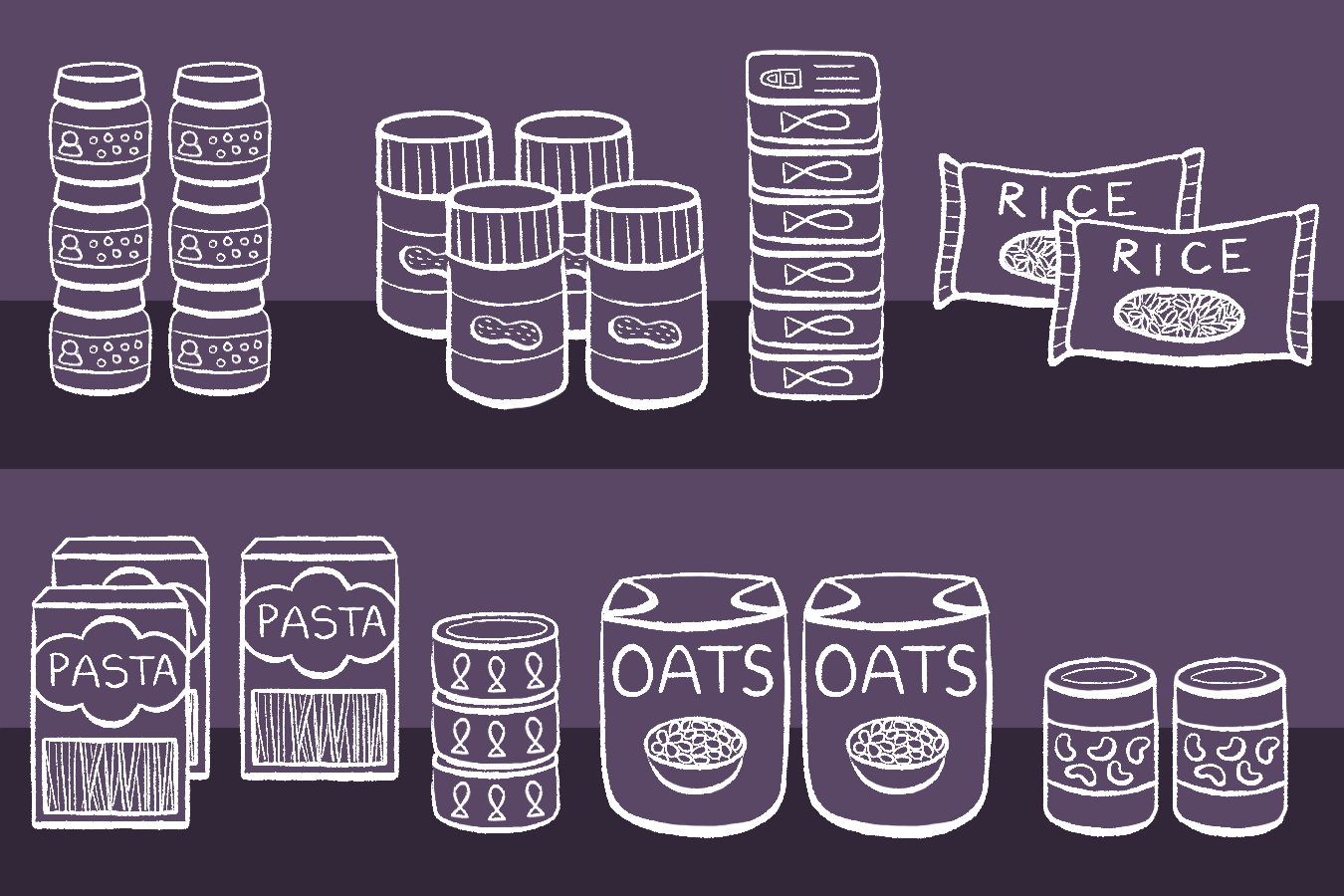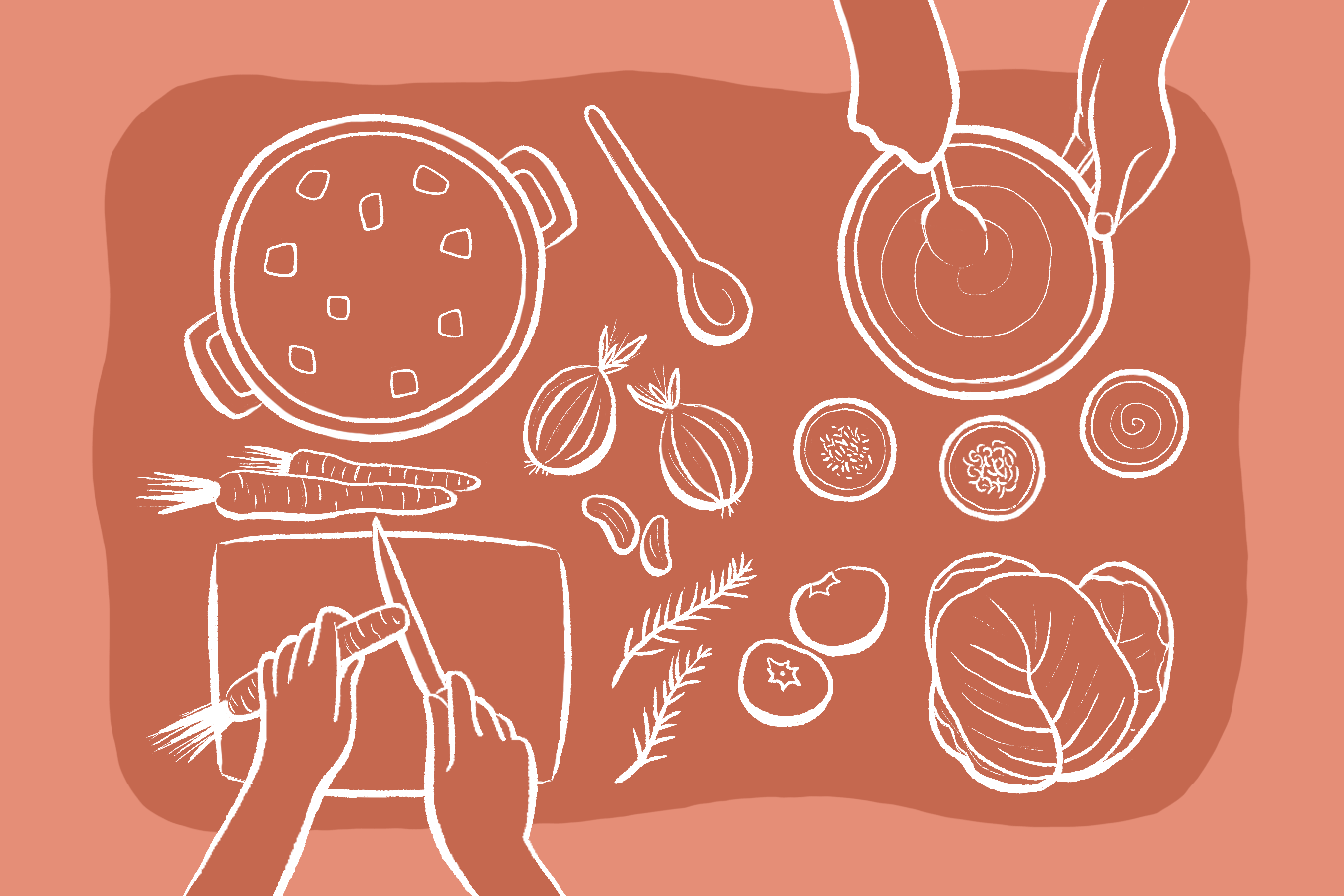
With rising unaffordability and income inequality in Toronto and the GTA, food banks are needed more than ever
“What is food insecurity? It’s many things. It’s parents who skip a meal once a week so their kids can eat,” says Rasheeda Qureshi, executive director of Seva Food Bank in Mississauga. It’s also people who have to choose between buying groceries or paying their rent on time. It’s anyone who doesn’t know how they’ll get their next meal—and that number is growing.
According to the 2019 Who’s Hungry Report by the Daily Bread Food Bank, there were more than 1 million visits to food banks in the Toronto region between April 2018 and March 2019, up four per cent from the year prior. So if you’re asking if food banks are really necessary, the answer is yes—more than ever.
Here’s what you should know about food banks in Canada, including how to donate what’s needed most, as well as how to access support when you need it.
What’s a food bank? Why are food banks important?
A food bank is a nonprofit organization that collects safe, nutritious and culturally appropriate food, and redistributes it to individuals and families experiencing food insecurity.
Some food banks act exclusively as distribution centres for their member agencies. Daily Bread, for instance, supplies nearly 200 food programs across Toronto. Other food banks, including Seva, are on the frontline, giving directly to people in need.
Why are food banks needed? Access to food is a human right, but as long as poverty exists, food insecurity will, too. As Qureshi explains, if you’re living below the poverty line, at some point you’ll likely be unable to access sufficient, healthy food due to financial constraints. Many Seva clients are people on fixed incomes, like seniors. Many others work, trying to make ends meet on $14 an hour (Ontario’s minimum wage)—a daunting challenge in the Toronto area, where affordable housing is increasingly scarce.

Where do food banks get their food? How do food banks work in Canada?
Food banks get provisions from a lot of different places. In some cases, they may purchase some of what they need, in addition to securing food donations through individuals, farms and, significantly, corporate partners.
The charitable organization Food Banks Canada, for example, supports its network of more than 640 food banks and 3,000 food agencies by getting supplies from national retailers, like Loblaws and Walmart. Through this program, local food banks receive about 13 million pounds worth of fresh, frozen and non-perishable foods a year. There’s an eco-upside, too: the system reduces food waste for grocery companies.
How do I find a food bank near me?
If you’re wondering how to get food from food banks in Toronto and the GTA, the first step is to figure out which one serves the catchment area you live in. Here’s one easy way: use Feed Ontario’s Find a Food Bank online tool and enter your postal code or address. Formerly the Ontario Association of Food Banks, Feed Ontario covers a network of 130 member food banks. Also, if you visit a food bank that doesn’t serve your catchment area, you’ll typically be given a referral to one that does.
How do I qualify to use a food bank?
If you’ve never used a food bank before, you likely have a lot of questions. Here are answers to some common ones:
- Are food banks free? Yes, as a resource for individuals and families experiencing or at risk of poverty, access to food banks is free.
- Who can go to food banks? Can anyone use food banks? They’re designed for people who need help putting food on the table, but the criteria for who’s eligible isn’t strict. At The Stop in Toronto, a United Way-funded agency that was one of Canada’s first food banks when it opened in the 1980s, community services coordinator Mike Taurozzi recognizes first-timers may feel anxiety and he strives to put them at ease: “I’m not going to send anybody away without food.” The same goes for Seva: “We will serve you if you want to be served and feel like you need the service,” says Qureshi. “For most, it is a terribly difficult decision to use a food bank. People have told us they’ve sat outside in the car for hours, mustering up the courage to come in.”
- What do I need to get food from the food bank? Food bank requirements on your first visit typically involve filling out an intake form. Expect to provide ID and proof of address. You will be asked for personal information, which will be kept confidential, such as your income and expenses as well as how many people are in your household. If you’re uncomfortable sharing your income, you won’t be forced to, says Qureshi. “There’s no requirement one way or another,” she explains.
- What do food banks give you? What you get at food banks in Canada, and how often you can use a food bank, will vary by the specific organization. The Daily Bread Food Bank’s member agencies, for example, provide two to three days’ worth of food, based on the size of the family. Seva gives seven to 10 days’ worth of provisions, once per month, to their clients.

What can you donate to a food bank? What are the most needed items?
What’s accepted varies by organization, so if you’re interested in making food bank donations, call or check the website of the place you’d like to support.
Foods with high nutritional value are particularly welcome. Also, consider donating foods reflective of Toronto’s multicultural makeup (say, bitter gourd or lotus root, and not exclusively tinned peas). “Canada is so extraordinarily diverse, so we are sensitive to needing to provide culturally appropriate food,” explains Qureshi.
According to Feed Ontario, the most-needed items at food banks include:
- Grains: oatmeal, high-fibre cereal, brown rice, whole grain pasta
- Protein: canned salmon or tuna, peanut butter, canned or dried beans/lentils
- Fruits and vegetables: potatoes, onions, carrots, tomatoes
- Foods for special diets: gluten-free, lactose-free, kosher, heart-healthy and sugar-free items
Can you donate baby food to food banks?
Yes—in fact, baby supplies like puréed vegetables, powdered formula and baby cereal are on the most-needed list, too. Diapers and baby wipes are likewise in demand.
Do food banks take hygiene products?
Some do; call to check. The Stop, for example, needs the following (must be new and unopened): menstrual products, shampoo, deodorant, toothbrushes and toothpaste, dish soap and laundry detergent. (Due to space limitations, the list of accepted items is subject to change.)
What can you not donate to a food bank? Can you donate chocolate to food banks?
“Often, folks want to do something nice—and at the same time, clean out their cupboard,” says Taurozzi. So, if you’re eyeing the dusty can of beans that’s been in your pantry for five years and wondering, Can I donate expired food to a food bank? ask yourself instead: Would you eat it? “If you don’t want it, we don’t want it either,” says Taurozzi. The same goes for opened and leftover food.
It’s also a good idea to contact your local food bank for other specific donation guidelines. While it may seem thoughtful to donate little luxuries like sweet treats, they might not be accepted. For example, The Stop prioritizes nutritional value—so no pop or sugar-laden drinks, potato chips, candy, chocolate bars, ramen or canned pasta, please.

How else can I help out with my local food bank?
If you’re debating whether it’s better to donate money or food to a food bank, “cash is always best,” says Taurozzi. “It allows organizations to purchase what they need, because the organizations know what they need best.” While all contributions are appreciated, if a food bank already has 700 cans of baked beans, they don’t need more of the same.
Also, ask about becoming a food bank volunteer if you’re keen to do more. At both Daily Bread and Seva, opportunities include family volunteering days, so children and their parents can pitch in together, helping to sort items or stock shelves.
Many food banks do much more than distribute food, too—they’re often neighbourhood hubs that work to foster social connection and education. At The Stop, for example, resources include the Healthy Beginnings pre-natal program, peer advocates helping with issues like housing, and three community kitchens.
At Seva’s new Malton-based Community Teaching Kitchen, food-bank clients will soon be able to take Fundamentals of Cooking Classes, inspired by an elderly widower who only took easy-to-heat foods because he lacked kitchen know-how. The classes, taught by volunteers, will teach how to prep healthy meals and use unfamiliar ingredients. “We are now building out a curriculum to provide cooking skills, so people can extend their food budget by utilizing foods they would never take otherwise,” says Qureshi.
Food banks are an invaluable resource—and there are many ways to support one near you — so look into all the programming offered, and ask how you can make a difference.